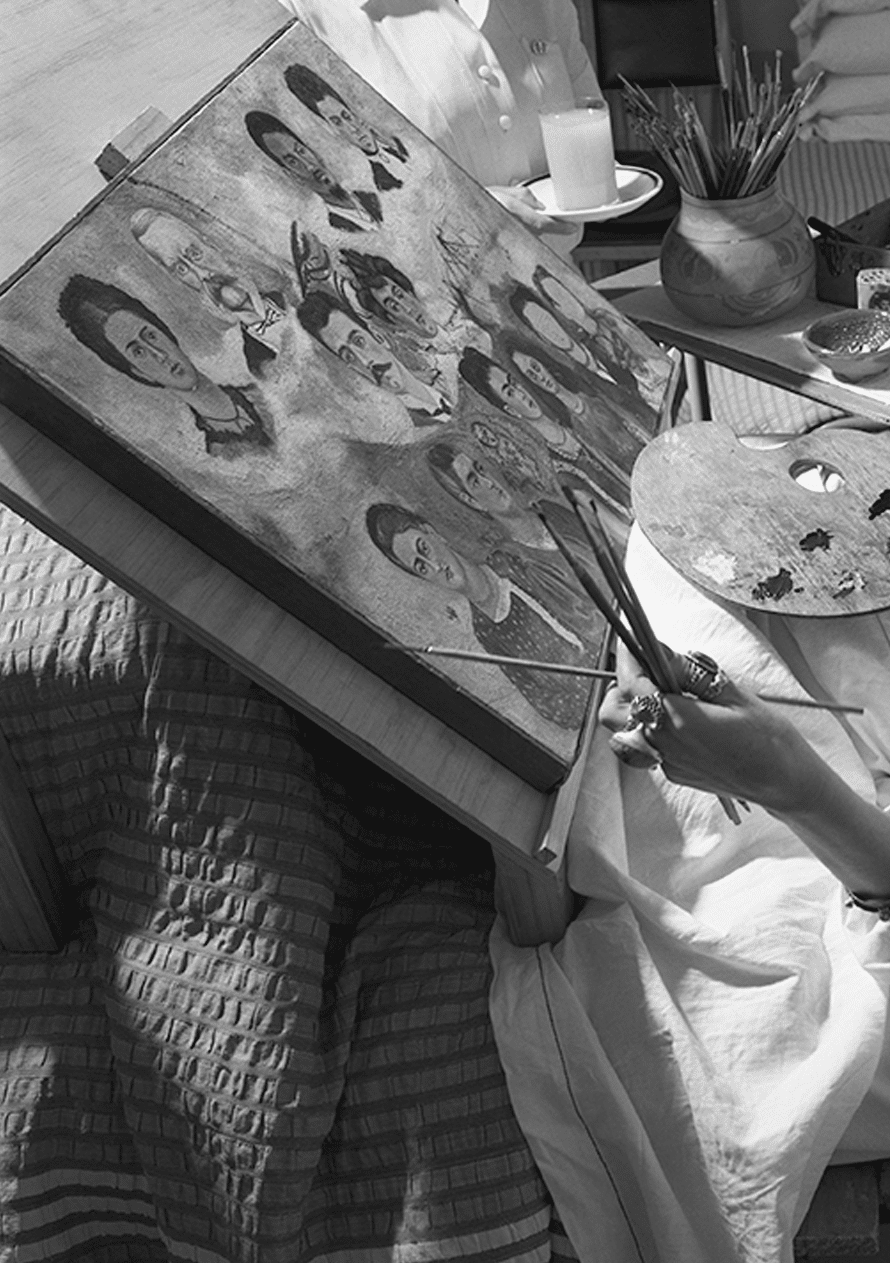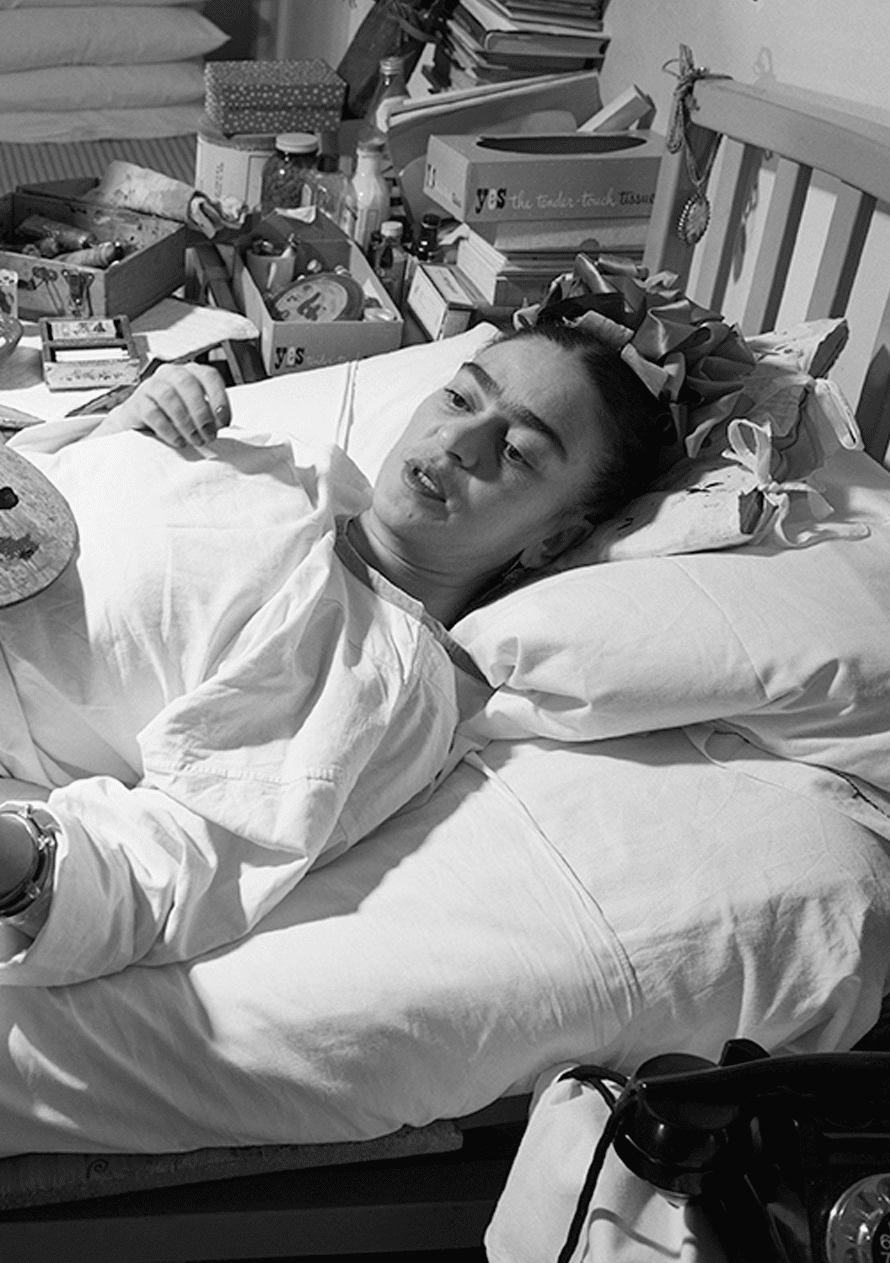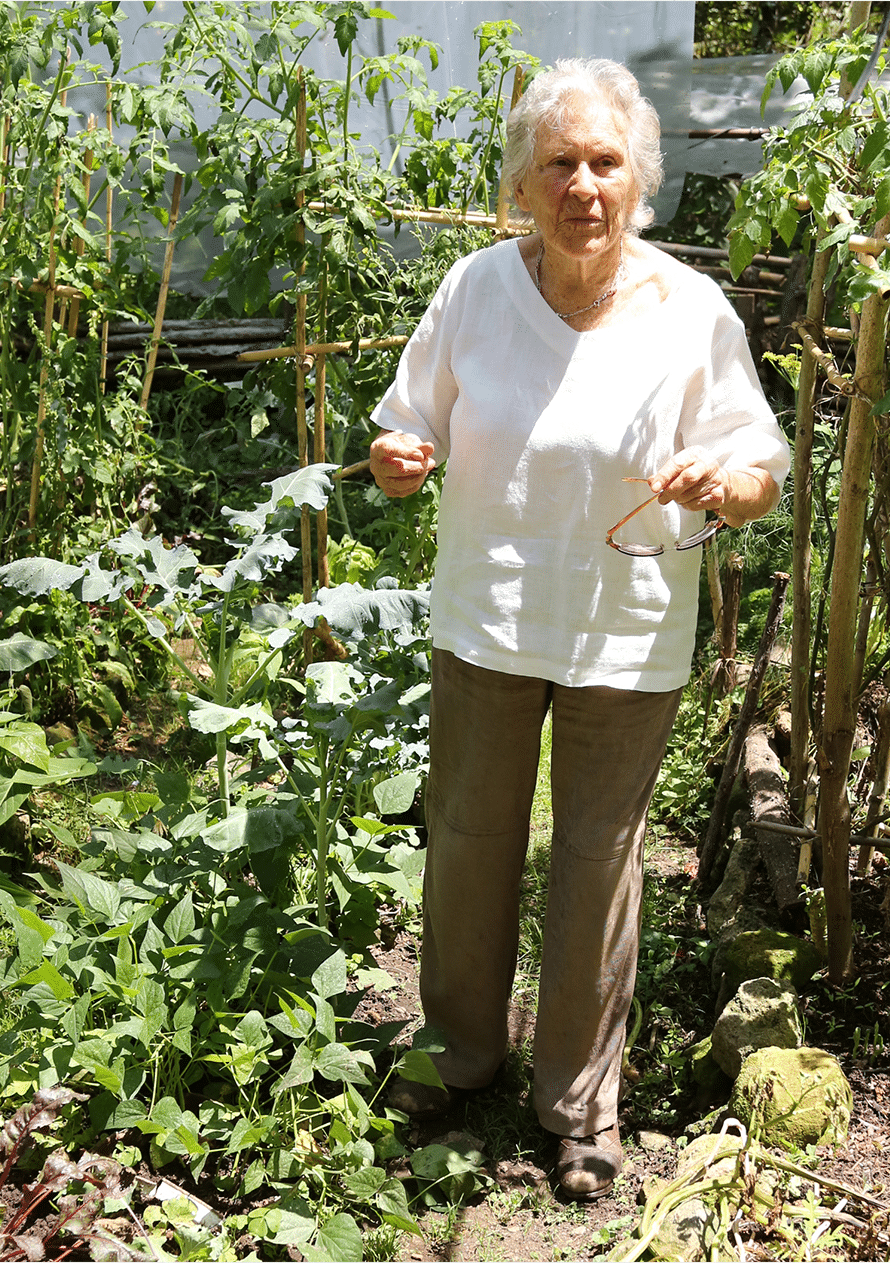


Everything about Frida Kahlo (Mexico City, 1907- 1954) has been written, confirming, almost to the point of exhaustion, that she is the most famous Mexican artist in the world. For many she could even be the most famous among all the art figures that have become icons beyond their work.
Not even Frida, who painted her face in more than fifty self-portraits, could have imagined the extent of the infinite mirror that the current “Fridamania” represents. Everything about her is important: her historical moment, the temperament of a woman who knew how to make herself seen in an environment of macho giants, her political tendencies, the controversy of her relationships and love affairs, her painting —which André Breton defined as “A ribbon around a bomb”—, her writing, her phrases, her dressing style, her character and entire personality that have become an object of popular appropriation present in all kinds of memorabilia.
In 2018, the exhibition Making Her Self Up at the Victoria & Albert Museum in London broke record number of visits, just on the first day it sold more than 20 thousand tickets. In that same year she became the first artist that Google Arts & Culture presented in a 360-degree retrospective a journey around her house. Over 800 images of paintings, drawings, sketches, works of art, videos and interactive stories are available to users, who can access them through a mobile app.


Architect Alberto Kalach (Mexico City, 1960) says that his vocation was clear from a very young age, when his father gave him an encyclopedia: as he flipped through the first volume he came across letter “A” for “architecture”; the word, illustrated with a photo of Fallingwater —a work by architect Frank Lloyd Wright—, was an epiphany that marked his destiny.
Kalach defines architecture as “the construction that surrounds us, made with art”. He studied at the Universidad Iberoamericana and Cornell University in Ithaca, New York. His name has become a reference whose work is distinguished by his interest in creating beautiful, functional and sustainable buildings such as Faro de Oriente, the José Vasconcelos Library or the Reforma 27 tower. He is specially inclined to urbanism in Mexico City.
He has received numerous international awards, such as the first place in the Petrosino Park International Design Competition in New York (1996) —in collaboration with Ricardo Regazzoni and Julio González Rojas. He founded the collective Mexico: Future City, which has developed ideas on a large scale together with architects including Teodoro González de León, Jose Castillo and Gustavo Lipkau. His Mexico, Lakeside City project represents the most important contribution of the last decades by Mexican architects.
Diana Kennedy (United Kingdom, 1923) is one of the great chroniclers of national gastronomy, responsible for putting traditional Mexican cuisine on the culinary world map.
Her vocation for research and her love for food have led her on a journey, spanning for more than 50 years, during which she has visited the least explored corners of our country. Almost always alone, she traveled along paths and roads; sometimes riding a donkey or driving her legendary white Nissan truck, in search of the knowledge, flavors, odor and colors of traditional cuisine.
Inspired by the work of the great Mexican cook and researcher Josefina Vázquez de León, her collection of adventures and knowledge, a dozen unclassifiable books were born —because they are simultaneously a travel log, a cookbook, a photo album, a chronicle and ethnogastronomy treatises—, among which are My Mexico: A Culinary Odyssey (1998), The Essential Cuisines of Mexico (2004), and Oaxaca al gusto (2010).
After becoming “The Queen of Mexican cuisine” and receiving recognition including the Order of the Aztec Eagle, she is now focused on other things such as the loss of food authenticity due to the voracity of the industry and the abandonment of the Mexican fields, in addition to the extinction of ancestral ingredients.
She fights for her cause from the orchards of “La Quinta Diana”, her ecological house, located in Michoacán, where she shelters for their study and preservation more than 200 species of herbs, plants, bushes and trees, many of them in danger of extinction.


